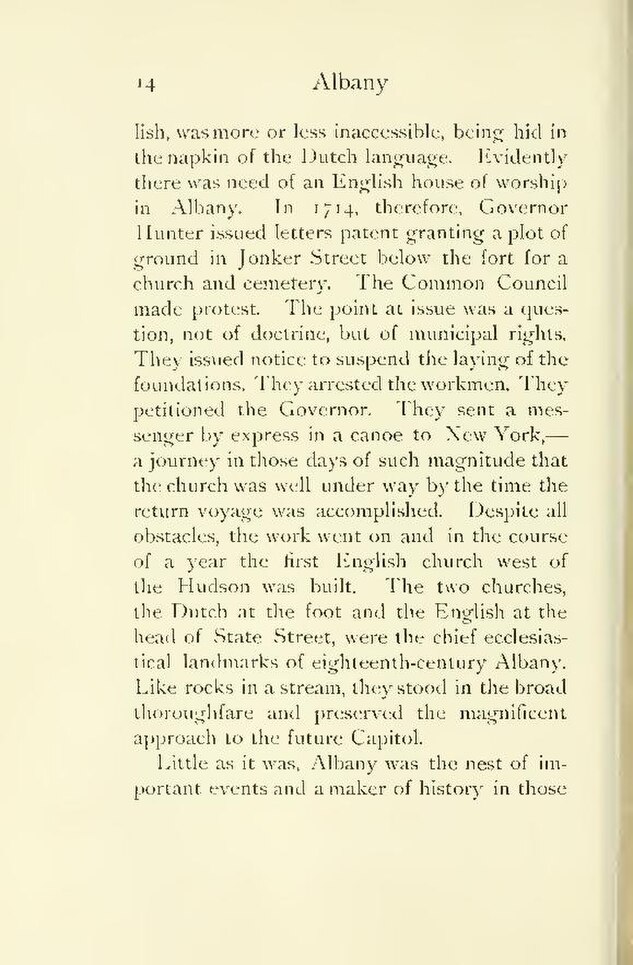lish, was more or less inaccessible, being hid in the napkin of the Dutch language. Evidently there was need of an English house of worship in Albany. In 1714, therefore, Governor Hunter issued letters patent granting a plot of ground in Jonker Street below the fort for a church and cemetery. The Common Council made protest. The point at issue was a question, not of doctrine, but of municipal rights. They issued notice to suspend the laying of the foundations. They arrested the workmen. They petitioned the Governor. They sent a messenger by express in a canoe to New York,—a journey in those days of such magnitude that the church was well under way by the time the return voyage was accomplished. Despite all obstacles, the work went on and in the course of a year the first English church west of the Hudson was built. The two churches, the Dutch at the foot and the English at the head of State Street, were the chief ecclesiastical landmarks of eighteenth-century Albany. Like rocks in a stream, they stood in the broad thoroughfare and preserved the magnificent approach to the future Capitol.
Little as it was, Albany was the nest of important events and a maker of history in those
